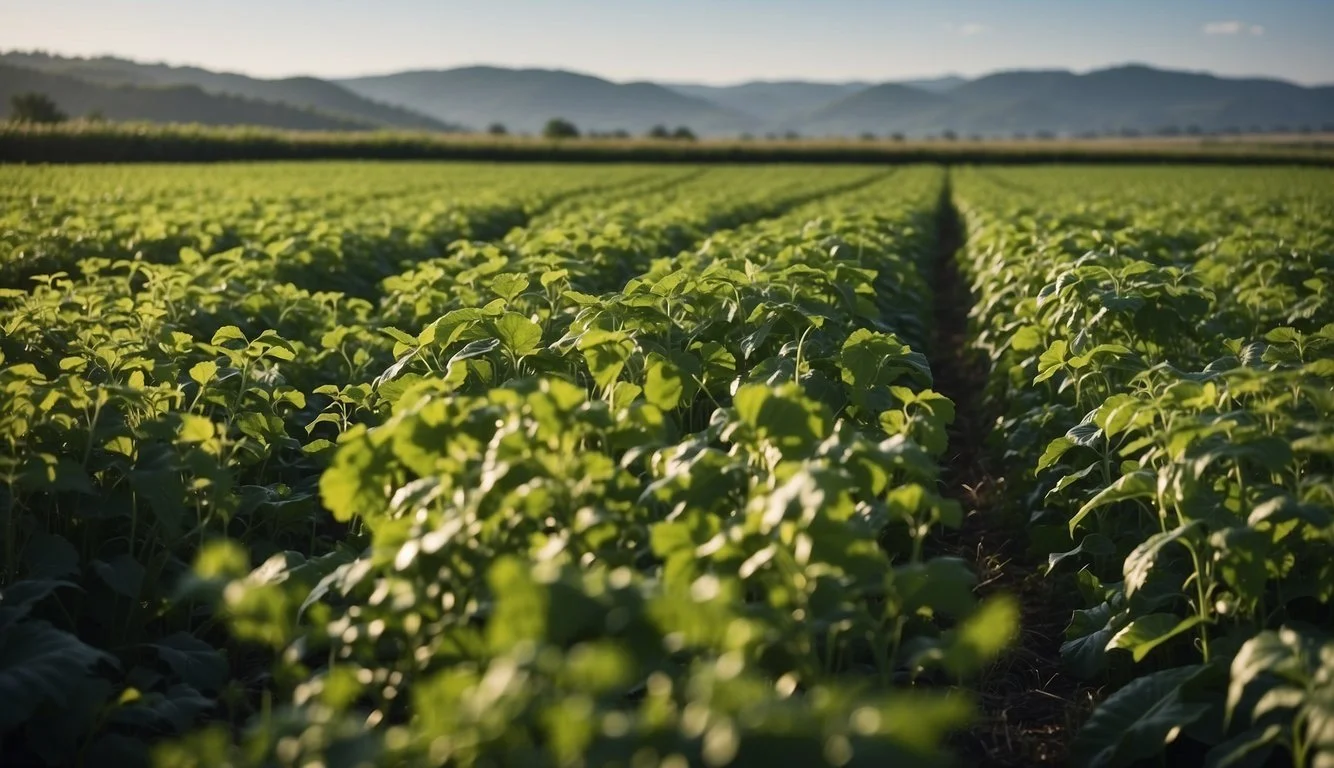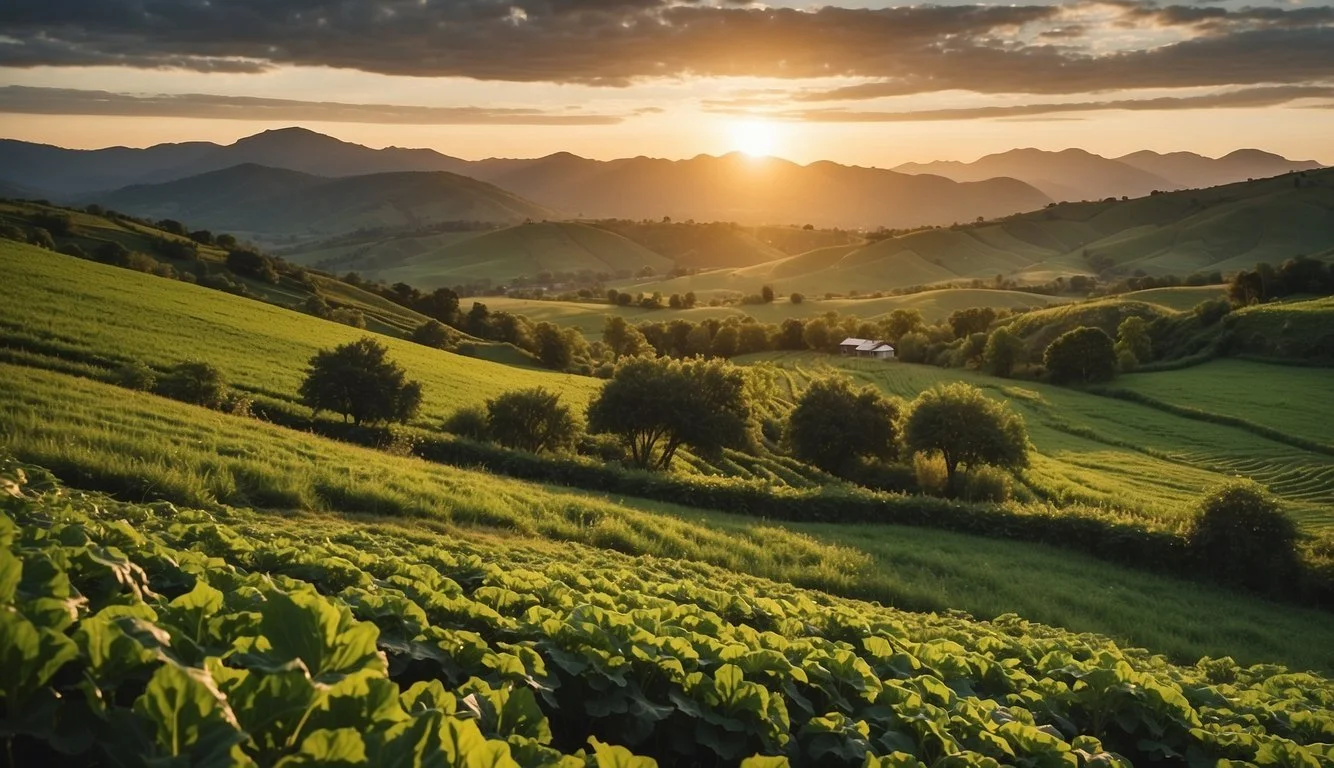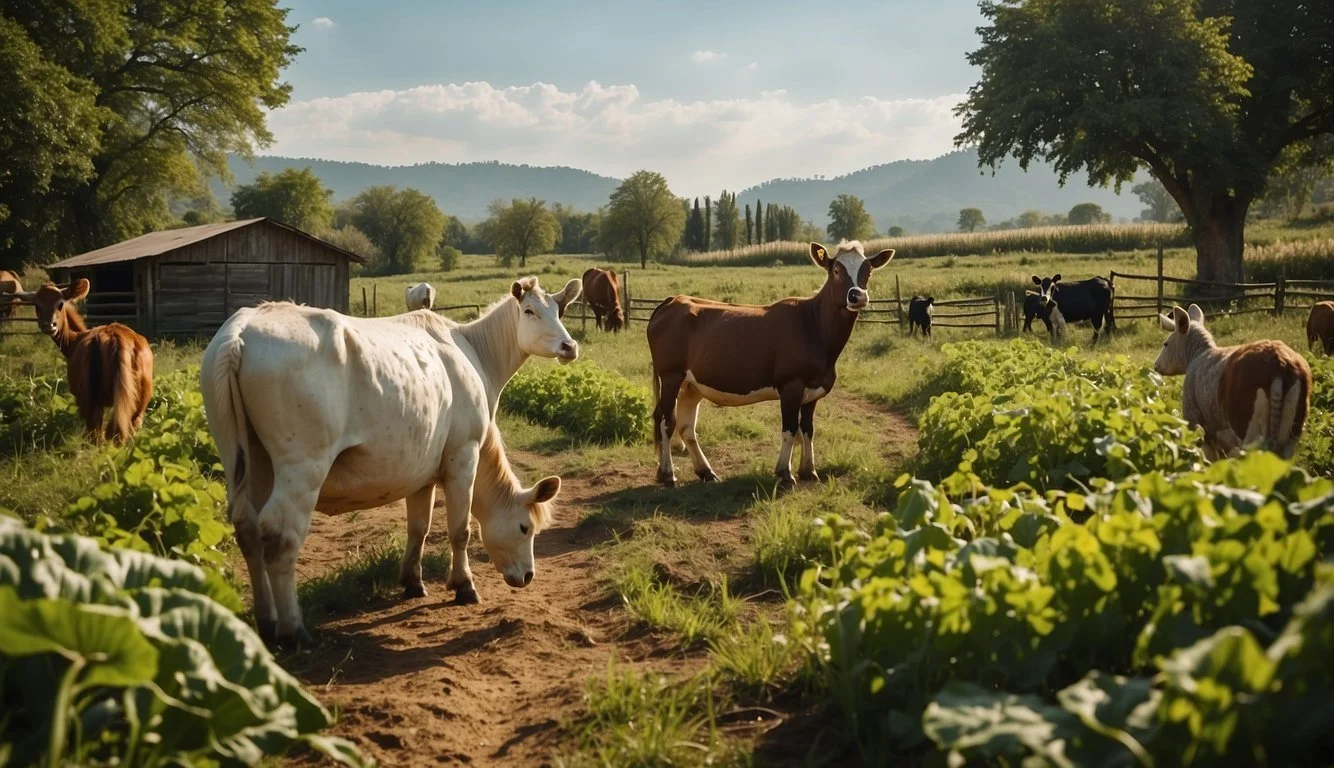Documentary Review: The Biggest Little Farm (2018)
A Deep Dive into Sustainable Farming
"The Biggest Little Farm" is a poignant and visually captivating documentary released in 2018 that follows the journey of John and Molly Chester as they leave urban life to start a sustainable farm in Southern California. The film opens with the perilous California wildfires of 2018, setting the stage for the numerous ecological and personal challenges the Chesters face in their quest.
This documentary offers an intimate view of the ups and downs of sustainable farming, making it a must-watch for anyone interested in environmental conservation and the resilience needed to pursue such a lifestyle. Through stunning cinematography and heartfelt narration, viewers are invited to witness the intricate balance required to maintain a thriving ecosystem on their 200-acre plot.
Directed by John Chester, an Emmy-winning documentarian, "The Biggest Little Farm" not only educates but also emotionally engages the audience. The film chronicles the revitalization of the land with the aid of an expert mentor and a diverse team, making it a compelling story of dedication and ingenuity.
Film Overview
The Biggest Little Farm (2018) follows John and Molly Chester as they transition from urban life to managing a sustainable farm. This documentary highlights the challenges and triumphs they face.
Synopsis
The Biggest Little Farm begins with John and Molly Chester's decision to leave Los Angeles and start a sustainable farm. Motivated by their dog Todd's barking and the resultant noise complaints, they purchase Apricot Lane Farms in 2011. Over eight years, the film documents their journey to revive 200 acres of dry, desolate land. With guidance from a mentor and the help of a dedicated team, they implement biodynamic and organic farming techniques. The documentary captures all aspects of farm life, from battling pests and wildfires to celebrating new births among the livestock, providing an intimate look at the hard work and reward involved in building a diverse and balanced ecosystem.
Main Themes
The documentary explores several key themes, including the importance of biodiversity and the relationship between humans and nature. By focusing on biodynamic farming practices, the Chesters highlight how diverse plant and animal life can create a self-sustaining environment. The film also examines the resilience required to overcome natural disasters, such as wildfires and droughts, demonstrating the unpredictable challenges in sustainable farming. Another central theme is community and teamwork, as the Chesters rely on their mentor and farmworkers to succeed. The intimate portrayal of their struggles and triumphs emphasizes the rewarding nature of sustainable practices and the values of perseverance and innovation in the face of adversity.
Production Background
"The Biggest Little Farm," directed by John Chester, takes the audience through the journey of transforming a barren plot of land into a thriving, biodiverse farm. The film captures the vision, hard work, and numerous obstacles encountered along the way.
Initial Concept
The idea for "The Biggest Little Farm" began with John and Molly Chester's desire to leave city life and start a sustainable farm. Inspired by their own struggles with modern living, they sought to create a self-sustaining farm that worked in harmony with nature. Their journey started when they purchased Apricot Lane Farms in Moorpark, California, envisioning it as a place where regenerative farming techniques could flourish. This initial concept was driven by their commitment to creating a model that balanced human needs with the natural ecosystem.
Filming Process
The filming of this documentary was extensive, spanning eight years. John Chester, a seasoned documentary cinematographer, captured the evolution of the farm from an infertile wasteland to a lush, productive landscape. The process involved meticulous planning and recording various aspects of farm life, including the introduction of diverse plants and animals. The team utilized cutting-edge technology, such as drones and time-lapse photography, to document the intricate workings of the farm. Each phase of development, from initial planting to handling unexpected natural events, was documented to provide a comprehensive look at the farm's growth.
Challenges Encountered
Throughout their journey, the Chesters faced numerous obstacles. One significant challenge was their lack of experience in farming, which led to numerous learning curves and occasional failures. They also dealt with unpredictable weather patterns, pest infestations, and financial constraints that threatened their progress. The devastating California wildfires of 2018 posed a near-catastrophic risk to their land. Despite these hurdles, the Chesters remained resilient, adapting their strategies to overcome each adversity. Their perseverance and willingness to learn from their mistakes ultimately played a crucial role in the farm's success.
Critical Analysis
"The Biggest Little Farm" offers insights into sustainable farming practices and personal perseverance. The film's narrative structure, visual and audio elements, editing techniques, and soundtrack contribute significantly to its compelling storytelling.
Narrative Structure
The film's narrative follows John and Molly Chester as they transition from urban life to building a sustainable farm in California. It unfolds like a storybook, making complex agricultural concepts accessible to a broader audience.
The inclusion of personal setbacks and triumphs creates an emotional connection and allows viewers to experience the unpredictable nature of farming alongside the couple.
Cinematography
Cinematography in "The Biggest Little Farm" is a visual feast showcasing the beauty of diverse ecosystems and farm life. John Chester, a seasoned documentary cinematographer, captures scenes with stunning detail and vibrant colors.
Close-ups of animals and wide shots of landscapes emphasize the interplay between humans and nature. The imagery not only documents but also enhances the storytelling.
Editing Techniques
Editing seamlessly weaves the narrative, balancing between the couple's personal journey and the broader environmental themes. The use of time-lapse sequences effectively demonstrates the farm's transformations.
Pacing is well-managed, allowing moments of tension and relief to unfold naturally. The film maintains the viewer's interest by varying between immersive day-to-day farm life and overarching challenges.
Soundtrack and Scoring
The soundtrack, composed by Jeff Beal, complements the film's tone and enhances the emotional impact of various scenes. Light, upbeat music aligns with moments of progress and success, while more somber tones underscore hardships.
Natural sounds from the farm, such as animals and weather, are carefully integrated, adding authenticity. The scoring supports the narrative without overpowering it, allowing the visuals and story to remain central.
Public Reception
"The Biggest Little Farm," directed by John Chester, has received notable attention from audiences and critics alike. Examining the film's response from these groups provides insight into its impact and success.
Audience Response
The documentary has resonated widely, drawing praise for its heartfelt storytelling and educational value. Viewers have lauded the film for its behind-the-scenes look at the challenges and triumphs of sustainable farming. On Rotten Tomatoes, the movie boasts a high rating, indicating strong approval. Various audience reviews frequently mention the film's ability to inspire and entertain, appealing to both urban dwellers and those familiar with rural life.
The heartwarming portrayal of the couple's journey, combined with stunning cinematography, has been highlighted as a key attraction. Many reviews remark on the genuine, relatable depiction of the Chesters' persistence and innovation, which has captivated a broad demographic.
Box Office Performance
At the box office, "The Biggest Little Farm" has performed commendably for a documentary. It premiered at the Telluride Film Festival, propelling its visibility among film enthusiasts. The film achieved wider commercial success, grossing several million dollars globally, a testament to its widespread appeal.
Released in select theaters, it maintained a steady presence due to positive word-of-mouth and critical acclaim. In addition to box office revenue, the film has been popular on streaming platforms, extending its reach and profitability. Its financial performance underscores the documentary's significant impact and popularity among diverse audiences.
The Impact of the Film
"The Biggest Little Farm" has significantly influenced environmental awareness, inspired the agricultural community, and found a place in educational settings.
Environmental Consciousness
The documentary emphasizes the importance of biodiversity and sustainable farming practices. John and Molly Chester transformed a barren piece of land into a thriving ecosystem. They showed how regenerative agriculture can restore soil health, increase biodiversity, and combat climate change.
Their journey showcased practices such as rotational grazing, composting, and the use of cover crops. These methods, highlighted in the film, have raised awareness about ecological farming and its benefits.
Public Engagement: The film reached a wide audience, inspiring individuals to adopt more environmentally friendly habits. Viewers have reported changes in their personal gardening and consumption habits as a direct result of the film.
Agricultural Community Influence
"The Biggest Little Farm" has left a lasting mark on the farming community. The Chesters' success with regenerative agriculture has provided a practical model for other farmers.
Adoption of Techniques: Various farmers have adopted some techniques showcased in the film, leading to improved soil health and productivity on their farms. The documentary has prompted discussions and workshops focused on sustainable farming practices.
The Chesters' story also highlighted the challenges and rewards of farming, offering a realistic portrayal that has resonated with both seasoned farmers and newcomers. Their transparency about failures and successes provided valuable insights and learning opportunities.
Educational Use
This documentary has become a valuable educational tool. It's used in schools and universities to teach students about sustainable agriculture, ecology, and environmental science.
Curriculum Integration: Educators have integrated the film into their curriculum to illustrate real-world applications of environmental science theories. It serves as a case study for understanding complex ecological systems and regenerative farming methods.
Field trips to farms practicing similar techniques and classroom discussions inspired by the documentary further enrich students' learning experiences. The film's practical demonstrations of ecological principles offer a tangible connection to theoretical concepts.
"The Biggest Little Farm" has undeniably made an impact by inspiring individuals, influencing the farming community, and becoming an invaluable educational resource.
Director's Vision
John Chester's documentary "The Biggest Little Farm" illustrates a transformative journey from urban living to sustainable farming. The film shares Chester's insights and experiences through engaging storytelling and personal anecdotes.
John Chester's Perspective
John Chester, a seasoned documentary cinematographer, brings a unique vision to "The Biggest Little Farm." He focuses on the intricate balance between humans and nature. Chester's experience behind the camera allows him to capture stunning visuals, showcasing the beauty and challenges of farming.
His aim is not just to document his and his wife's journey but to inspire others to consider sustainable living. Chester’s vision emphasizes harmony with the environment. His approach presents a hopeful yet realistic portrayal of farm life.
Personal Anecdotes
Throughout the film, Chester intersperses personal stories that add depth and relatability. He recounts the early struggles of transforming a neglected piece of land into a thriving farm. These anecdotes include moments of hardship and triumph.
One notable story is about bringing home a rescue dog named Todd whose barking initially caused issues with neighbors. Chester shares how they adapted and overcame these challenges, highlighting the personal growth alongside the farm's development.
These stories provide an emotional connection, making the viewer feel a part of the journey.
Comparative Analysis
"The Biggest Little Farm" (2018) stands out both among its documentary peers and through its innovative contributions to the genre. The following subtopics illustrate its alignment and divergence within the documentary landscape.
Similar Documentary Works
"The Biggest Little Farm" shares thematic similarities with "Food, Inc." and "Farmageddon", both of which delve into modern agricultural practices and their impacts. However, this documentary diverges significantly in its personal narrative approach, focusing on the intimate journey of John and Molly Chester.
Visually rich documentaries like "Our Planet" also compare, given their stunning cinematography and focus on natural processes. Yet, while "Our Planet" takes a global perspective, "The Biggest Little Farm" zooms in on a singular, transformative farming story in California.
Innovations and Genre Contributions
John Chester's documentary innovates with its persistent and immersive narrative style, showcasing the evolution of Apricot Lane Farms over nearly a decade. Through this longitudinal study, it provides a comprehensive view of sustainable farming practices, rarely presented in mainstream documentaries.
Additionally, its cinematic quality—featuring vibrant visuals and an evocative soundtrack—elevates the viewer experience. The integration of personal storytelling with broader ecological discussions sets a new benchmark for emotionally engaging and informative agricultural documentaries, making it a significant contribution to the genre.
Concluding Thoughts
"The Biggest Little Farm" captures a heartfelt and compelling journey of John and Molly Chester. Their transition from city life to managing a traditional farm is both inspiring and educational.
The documentary integrates stunning cinematography with a narrative that underscores the resilience required in farming. The audience witnesses the couple's struggles, from dealing with wildfires to overcoming the complexities of sustainable agriculture.
Viewers will appreciate the authenticity portrayed, as well as the practical takeaways. The film cleverly intertwines personal anecdotes with broader environmental themes, making it a valuable watch for those interested in sustainability and ecological restoration.
The relationship between humans, animals, and the land is depicted in a nuanced manner. The Chesters’ experiences offer insights into the interconnectedness of healthy ecosystems.
Key Points Highlighted:
Real-life challenges in farming
The importance of biodiversity
Innovative farming practices
Through its engaging storytelling, the film provides a thought-provoking perspective on modern agriculture. The Chesters' dedication and perseverance serve as a testament to the rewards and trials of pursuing a dream against all odds.







